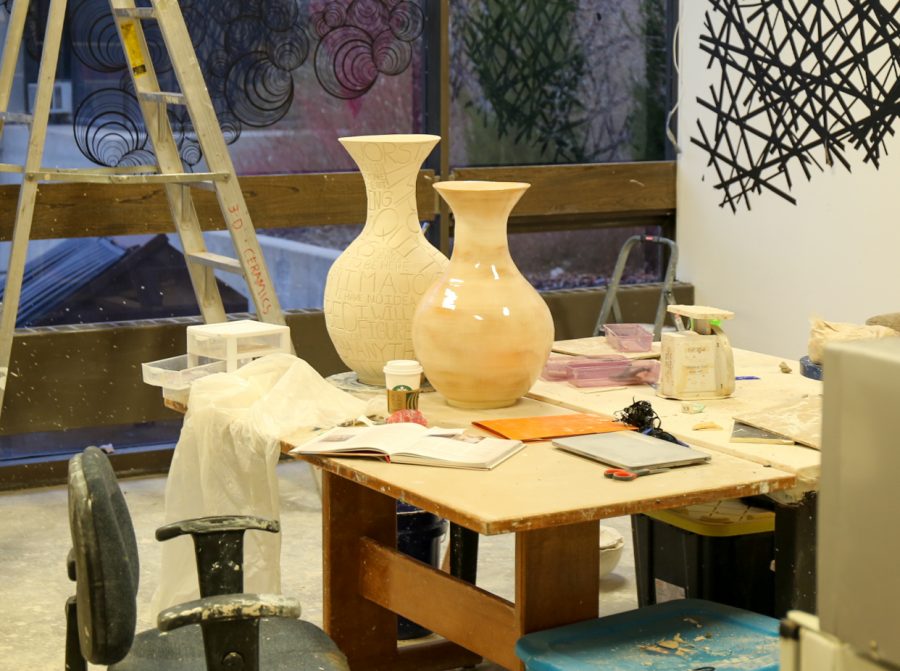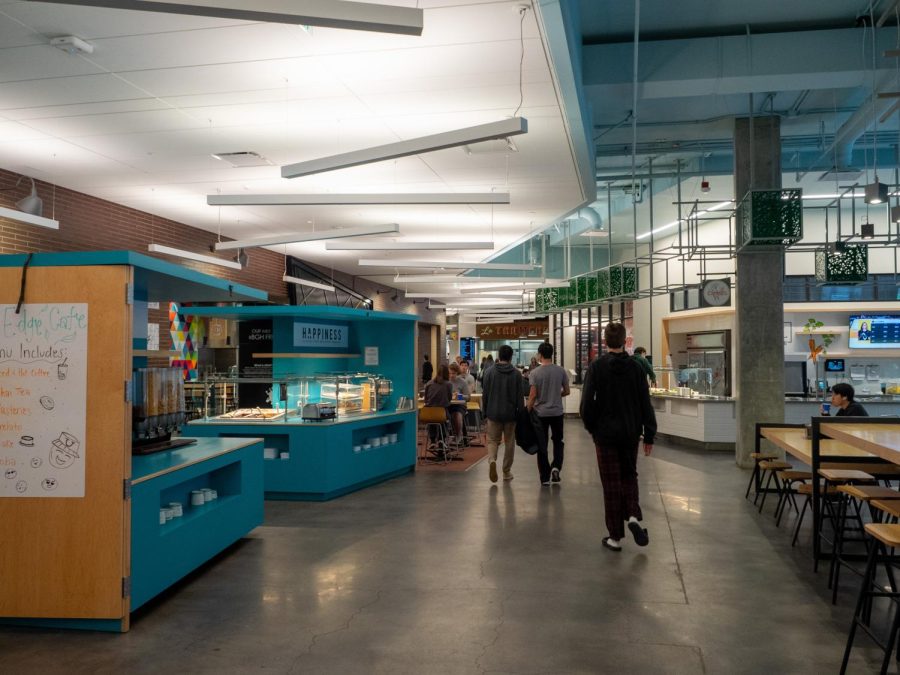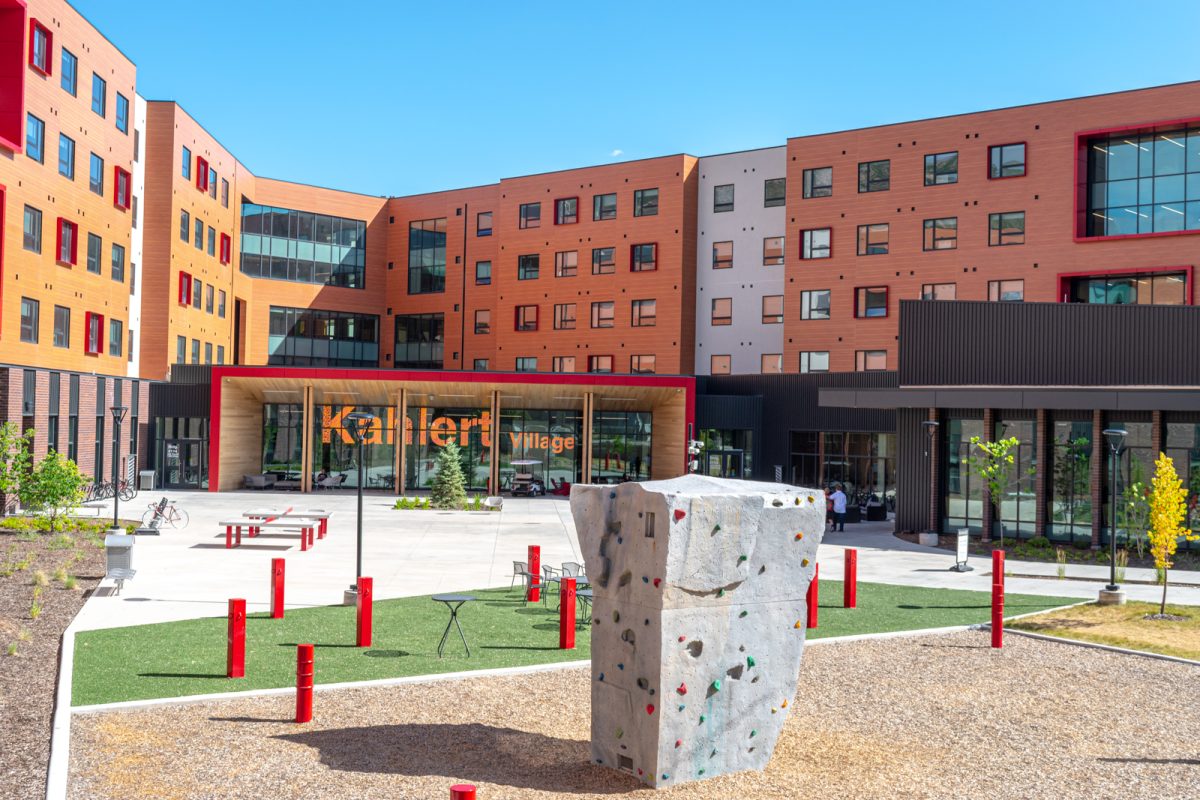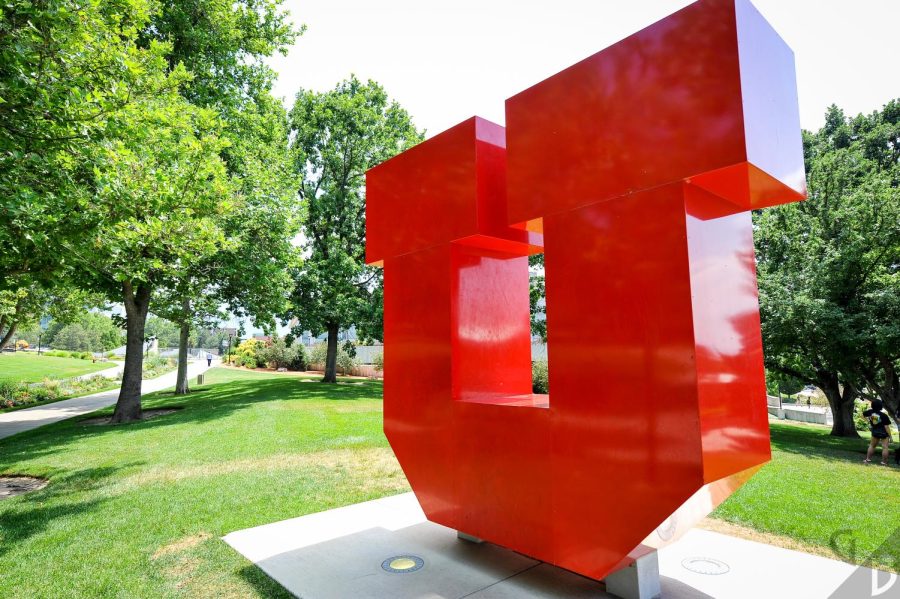McGrath: Biden Can Help Preserve School Art Programs
Outside of the art and architecture building on the University of Utah campus, November 13, 2020. (Photo by Tom Denton | The Daily Utah Chronicle)
November 21, 2020
I recently conducted an interview with an anonymous University of Utah student and SLC creative regarding how her art and creativity have drastically changed during the pandemic. We discussed counterculture, collaboration and — most importantly — the necessity of the arts. I was particularly struck by one remark, “Stagnation can become overwhelming. Collaboration keeps me excited because art can be this connection of sharing joy.”
The Trump administration repeatedly proposed budget cuts that would end federal cultural agencies supporting the arts, humanities and public television stations across the nation. Trump’s budget for 2021 also proposed eliminating the National Endowment for the Arts and cutting public education funding by $5.6 billion. The arts, music and other “extracurricular” education subjects are the first to go when funding is decreased. As school budgets contract, greater portions of funding are funneled to STEM courses and “core” subjects, especially since national education policies favor standardized testing over creative endeavors. These contributing factors are killing the arts.
We’ll soon have a new president, though, and a new history-making first lady. Though no other first lady has worked for pay outside the White House during her husband’s administration, Jill Biden will likely continue to work full time as a college English professor. We will have someone in the president’s core sphere of influence who truly understands education. Former Secretary of Education Betsy Devos, on the other hand, lacked a background in teaching. Biden’s presidency offers a window of opportunity for advocacy and change. We must lobby and advocate for increased funding for public education and the arts, in particular.
Art education is essential to learning and cognitive development. Students who participate in fine art classes tend to raise their SAT scores by an average of 91 points. A study found that strengthened brain hemisphere coordination — which art and music classes facilitate — improves math performance. In other words, art improves our mental capacities in the very subjects we fund at art’s expense.
University of Pennsylvania researchers found that areas with a high concentration of the arts enjoy lower crime rates and even better health — but a 2012 report by the Department of Education detected a worrying “equity gap” in art education between high and low-income students. Poor, minority and immigrant students are more likely to feel alienated and struggle in standardized education, but they stand to benefit the most from an art and music education. Studies indicate that low-income students are more likely to succeed in college, vote and get jobs when they’ve been enrolled in art classes. It encourages these students to continue education and fosters problem-solving skills essential for career success. The bottom line is that when these programs are cut, students who are already at a disadvantage in school will suffer the most. On the flip side of that, advocacy for the arts is advocacy for all students’ well-being and academic success.
And of course, all of us have been compelled to connect through music and art since being physically disconnected due to COVID-19. The things we’ve missed and longed for the most this year have been a “connection of sharing joy,” as the local artist mentioned in our conversation. Our quarantine this year was defined by virtual concerts, “Tiger King,” old records, literature, movies and dancing. Can you imagine how we would cope in a world without TV, music, posters, photos, video games and other art forms? We need students to learn artistic craftsmanship and creative thinking. We need artists — so we need art teachers.
Art and music also serve an important purpose for those who have contracted COVID-19, not just those of us stuck at home. Creating and interacting with art is an integral part of patient care for a range of illnesses. Hospitals are designed with art and aesthetics in mind to soothe patients and visitors. Music is played in Neonatal Intensive Care Units to relax sick infants. Canadian doctors even prescribe patients museum visits. The arts literally enable and inspire us to power through all kinds of physical, emotional and psychological challenges.
Ensuring a future full of art and all its benefits starts with funding and supporting the arts in education. The Biden administration must allocate federal funds for school art programs as part of their efforts to undo Devos’ damage to America’s school systems. Our future directors, producers, musicians and artists need advocacy to keep art education in the curriculum. Of course, I’m biased — I’m a Film and Media Arts major here at the U. My peers are some of the most creative, intelligent and hardworking students I’ve been lucky to know. And all of our love for the arts began in the same place — early education.












